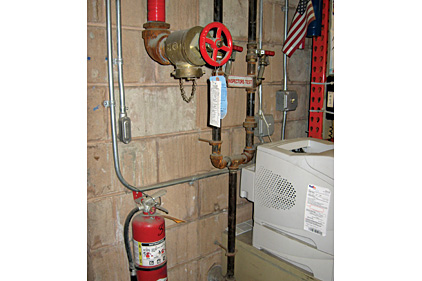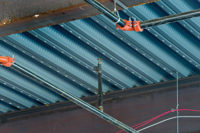The term “best practices” encompasses a wide spectrum of opportunities for property owners.
In many cases, consultants and engineers will use the phrase best practices when performing a review. For example, “This review was completed in accordance with local codes and standards, and best practices in the field.” Sometimes, this is referred to as “accepted good practice in the field.” But what does the term actually mean?
The answer, in the great consulting tradition, is it depends. It largely depends on interpretation and personal viewpoint. For example, NFPA 13 requires the armature of an upright sprinkler be installed parallel with the branch line to which the sprinkler is attached. Nothing is stated regarding the installation of pendant-head armatures.
However, one often finds these heads all have armatures installed parallel with the branch lines. This is a best practice. Not only does it help identify the way the piping is run above the ceiling, but it provides a “cleaner” look to the finished ceiling.
Every level
Best practices in fire protection are integrated at all phases of a project from design through installation and system turnover, to maintenance and inspections. An example of when best practices are applied is in the determination of water supply availability. Performing a fire hydrant flow test to determine the available public supply involves much more than opening hydrants and recording pressures.
While NFPA 291, Recommended Practice for Fire Flow Testing and Marking of Hydrants, provides detailed information on how to perform a flow test, it does not address best practices. One example would be to obtain as much information as possible on the public system so the tester can determine if the test data makes sense. If the test results do not make sense in the context of that information, it is possible the end user of the property could be paying for a fire pump or even a water-storage tank that is not needed.
Having a general knowledge of the public system can lead the tester to determine if a system valve is closed that, if opened, it would result in an adequate supply of available water. Consideration of where to flow water to minimize disruptions and avoid damage to private property during testing is another best practice. This may include cleaning streets and gutters to prevent debris from entering a storm drain. Also, limiting the time the hydrants are open to minimize the amount of water discharged is critical. The use of chlorine tablets also may be required to minimize the impact on the environment.
Get an assessment
Another pre-design best practice involves the performance of a fire risk assessment of a property. This can be accomplished for both new projects (undeveloped parcels) and existing structures. For new projects, an assessment can be completed during the course of the site investigation or water-flow test. The risks and exposures observed can be incorporated into the design of the structure to minimize the impact presented by any of those risks.
For example, a new building being constructed on a site which has a stream running through the property may require the site, building engineers and designers to account for potential flooding exposures. An assessment of an existing structure can aid the engineer/designer in determining where protection may need to be installed, upgraded or replaced. The assessment also can identify egress issues, compartmentation concerns, and alarm and notification problems, all of which can be taken into account during the design phase of the project.
In the design phase, the fire-protection system designer has at his or her disposal a vast library of codes and standards that provide guidance on not only when protection is required, but how to design it. However, these codes and standards do not address best practices. In addition, codes and standards do not address every possible situation, which through the use of best practices can help adequately protect a building of a unique nature.
The selection of a suppression system can be from any number of system types – wet-pipe sprinkler, dry-pipe sprinkler, gaseous suppression, etc. A data center, or similar critical environment, requires suppression protection, but unnecessary discharges are a concern. Though a wet-pipe or dry-pipe sprinkler system would be acceptable, best practices would lead the designer to utilize either a pre-action type of system or a clean-agent suppression system or both (with one as a backup to the other). This would give the area the needed protection at the level of “comfort” the occupants’ desire.
During installation, best practices are readily seen, as in the earlier example regarding armatures. There are other examples that also are readily used during installation, including installing piping level and plumb (though proper pitch is required for dry and pre-action systems), installing dry-pipe valves as close as practical to the protected space to minimize system capacity and pipe runs, and installing inspector’s test locations at the remote end of systems (even wet-pipe) to ensure flow occurs at the remote location. Best practices, however, may be most critical in fire-protection systems following system turnover.
It is always a best practice to have a standing inspection, testing and preventive maintenance programs in place. This will ensure the systems will be properly maintained and will operate as designed in the event of a fire or other disaster.
Author John D. Campbell, P.E., CFPS, MIFireE, is vice president of international services for Telgian Corp. Telgian is a worldwide provider of comprehensive fire, security, life-safety consulting and engineering/design services.

